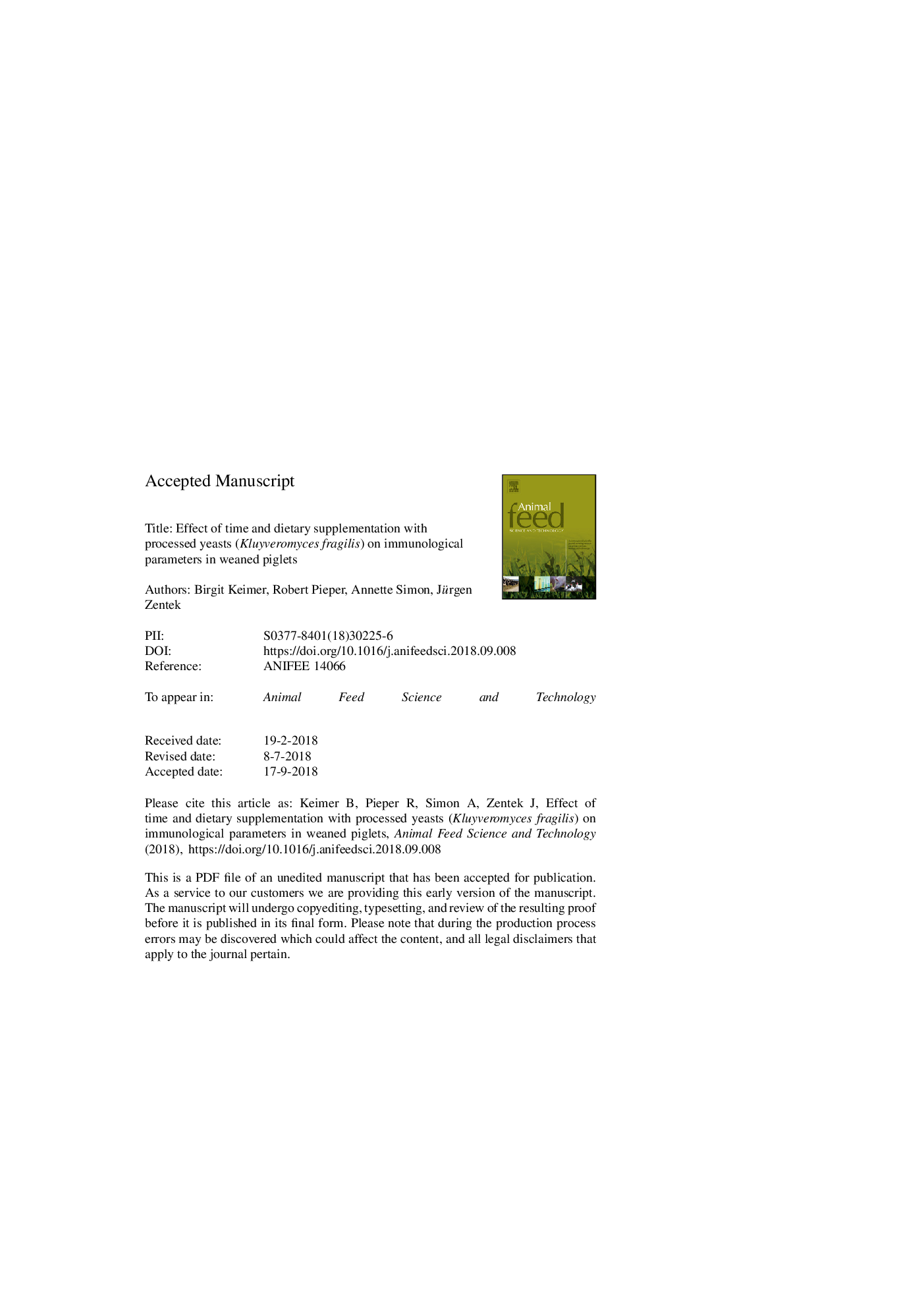| Article ID | Journal | Published Year | Pages | File Type |
|---|---|---|---|---|
| 11029289 | Animal Feed Science and Technology | 2018 | 34 Pages |
Abstract
A feeding trial was conducted to investigate the effects of differently processed yeast products (hydrolyzed or non-hydrolyzed) derived from Kluyveromyces fragilis on immunological parameters of piglets in an early phase post weaning (d 1-14). A total of 48 male and female piglets (6.17â±â0.32âkg BW, weaned at d 25) were allocated to three dietary groups (nâ=â8 replicates with two piglets each) receiving a control diet (CON) or diets with 1% non-hydrolyzed yeast (Diet NHY) or 1% hydrolyzed yeast (Diet HY). The piglets were fed isoenergetic and isonitrogenous diets and had ad-libitum access to feed (mash form) and drinking water. Blood samples were taken at d 1 and d 14 for differential blood count and phenotyping of lymphocytes and at d 1, d 3 and d 14 for analysis of phagocytic activity of leukocytes. Eight animals per treatment were sacrificed 2 weeks after weaning for jejunal and colonal tissue sampling for mRNA extraction and gene expression analysis of cytokines (TNFα, IL-6, IL-10, IL-12) and of tight junction proteins. Different treatments had no effect on piglet growth rate. Fecal scores were improved at d 8 after weaning in the yeast supplemented Groups HY and NHY (Pâ< 0.05). Differential blood count, phenotyping of lymphocytes, and mRNA expression of cytokines and tight junction proteins were not affected by dietary treatment. Significant time-dependent effects on the blood concentrations (G/L) of leucocytes, lymphocytes, monocytes, and on phenotypes of peripheral lymphocytes (%) such as B-cells (Pâ< 0.001), cytotoxic T-cells and monocytes (Pâ<â 0.01) have been observed. The difference between lymphocyte counts on d 1 and d 14 was highest in Group HY (P < 0.001). Compared with Group CON, the phagocytic activity of monocytes at d 3 after weaning was higher in Groups HY and NHY (Pâ< 0.05). In conclusion, both yeast products (HY and NHY) had minor effects on adaptive immune parameters, but increased innate immune response such as phagocytosis activity at d 3. Changes in adaptive immune response were more time-dependent than diet-dependent.
Keywords
Related Topics
Life Sciences
Agricultural and Biological Sciences
Animal Science and Zoology
Authors
Birgit Keimer, Robert Pieper, Annette Simon, Jürgen Zentek,
